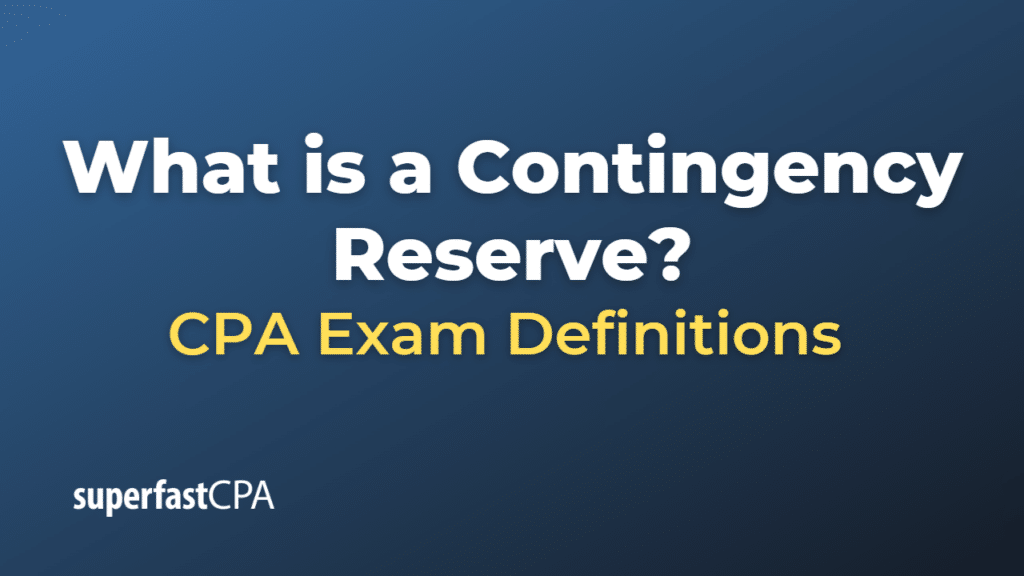Contingency Reserve
A contingency reserve is a budgetary allocation or a separate fund set aside to cover unforeseen expenses, risks, or uncertainties that may arise during the course of a project or business operations. The purpose of a contingency reserve is to provide a financial cushion to cover unexpected costs, delays, or changes in scope that were not anticipated during the initial planning and budgeting process. This reserve helps to mitigate the impact of uncertainties and ensures that the project or business can continue operating smoothly despite unforeseen events.
Contingency reserves can be used to address various types of risks, such as:
- Cost overruns: Unanticipated increases in the cost of materials, labor, or other project expenses can be covered by the contingency reserve to keep the project on track.
- Schedule delays: If the project timeline is extended due to unexpected issues, the contingency reserve can be used to cover additional expenses associated with the delay, such as extended labor costs or rental fees for equipment.
- Scope changes: If the project scope expands or changes during execution, the contingency reserve can be used to cover the costs associated with these changes, ensuring that the project can adapt to new requirements without jeopardizing its success.
- External factors: Contingency reserves can also be used to address risks that are beyond the control of the project team or organization, such as regulatory changes, natural disasters, or fluctuations in exchange rates.
The size of a contingency reserve will depend on the nature of the project or business, the level of uncertainty involved, and the organization’s risk tolerance. Typically, contingency reserves are expressed as a percentage of the total project budget, with larger reserves allocated for projects with higher levels of risk or uncertainty. It is essential for organizations to regularly monitor and adjust their contingency reserves as needed throughout the project or business operations to ensure that they remain adequate and responsive to changing conditions.
Example of a Contingency Reserve
Let’s consider a construction company, BuildCo, that is undertaking a large commercial building project. BuildCo estimates the total project cost to be $10 million and decides to set aside a contingency reserve to address potential risks and uncertainties during the construction process.
- Assessing risks and uncertainties: BuildCo performs a risk assessment and identifies several potential risks, such as fluctuating material costs, unexpected delays due to weather or permit issues, and possible changes in scope requested by the client.
- Determining the size of the contingency reserve: Based on the identified risks and the company’s risk tolerance, BuildCo decides to allocate a contingency reserve of 10% of the total project budget. This amounts to a contingency reserve of $1 million ($10 million x 10%).
- Using the contingency reserve: During the construction process, several unforeseen events occur:
- Material costs increase by $200,000 due to supply chain disruptions.
- Heavy rainfall causes a delay of two weeks, resulting in additional labor costs of $100,000.
- The client requests a change in the building design, which adds $300,000 to the project cost.
In this case, BuildCo can use its contingency reserve to cover these additional expenses, which total $600,000. This ensures that the project can continue without significant financial strain or the need to seek additional funding.
- Monitoring and adjusting the contingency reserve: BuildCo regularly monitors the project’s progress and risk exposure, adjusting the contingency reserve as needed. If additional risks or uncertainties arise, BuildCo may decide to increase the contingency reserve or take other actions to mitigate the impact.
This example illustrates the importance of having a contingency reserve in place to help manage unexpected events and keep a project on track financially. By proactively assessing risks and allocating an appropriate contingency reserve, organizations can improve their resilience and ability to adapt to unforeseen challenges.












